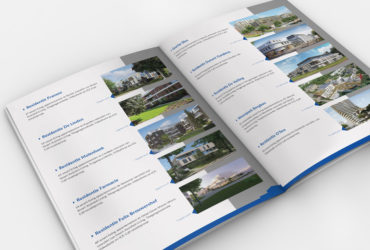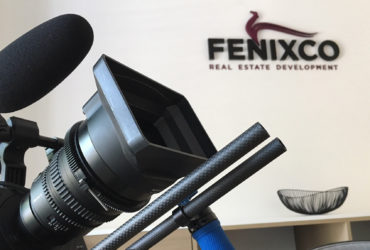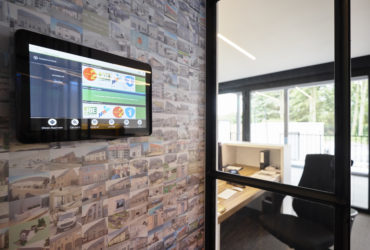FOCUS ARCHI, the reference magazine for architects, focuses on Smart Living

FocusArchi is the reference magazine for architects. Editor Pascal Dewulf spoke with Kris Pensaert (Managing Partner IPBuilding) about future-proof building and the super fast evolution of smart living.
You cannot miss it: houses, apartments, company buildings, … only get smarter and more interactive thanks to open source (home automation)systems compatible with a variety of techniques and applliances. The future is smart living: smart houses in combination with the Internet Of Things and home automation systems with open, IPbased communication standards.
Super fast evolution
We are experiencing a superfast evolution in open home automation systems, that much is clear. Kris Pensaert, Managing Partner of IPBuilding, foresees a golden future for this kind of open systems. Kris Pensaert: «Let’s consider a simple example such as a light bulb. Two decades ago a light bulb of 100Watt was commonplace. Then followed the halogen lighting and 50Watt became customary. Next came the energy saving lamp of 25Watt, superseded by LED lighting of 10Watt. Now we have powerLEDs of 1Watt. To use this 1Watt powerLED, you do not need copper cabling as is still the standard for electrical installations in about 80% of new constructions. A 230Volt connection which is still the standard today, will be less essential in future as we are increasingly evolving towards low voltage of 12 and 24Volt. Just check which appliances are low voltage and connected to a power outlet via an adapter: tablet, smart phone, laptop, digital recorder, lighting, … »
«In the future an electrician will have to work closely together with a computer specialist to install the cabling of a house.» Kris Pensaert, Managing Partner lPBuilding
Light versie
A light version of the contemporary, heavy cabled electrical cabinets is therefore an obvious option. Kris Pensaert: «Philips launched a series of lighting elements that can be cabled through UTP. This UTP lighting does not rely on a traditional electricity network, but works via Power-over-Ethernet (PoE). This is the same cable that controls the computer data of for example a smart lamp, and on top of that also controls the power.
It is evident that smart elements are no longer controlled via a light button, but via an app on a tablet, smart phone or laptop. We can therefore observe a systematic move from electrical installations to ICT installations. This brings us to the home automation system with an open platform. Why wouldn’t your home automation system not communicate directly with all automated “connected” appliances or techniques in your house? The architects have an important informative role towards the construction managers to inform them of this kind of open home automation systems for which the total cost of ownership will be considerably lower than closed one-brand home automation systems.»


